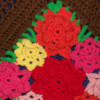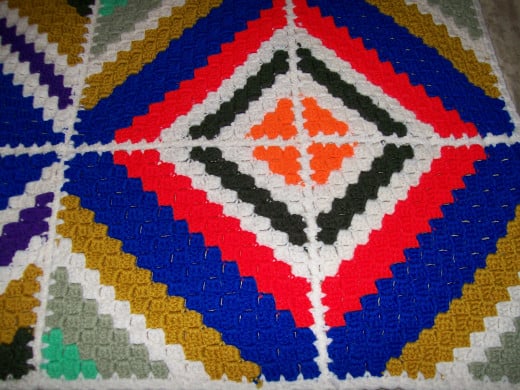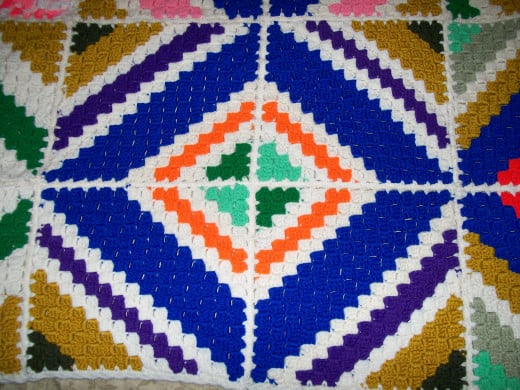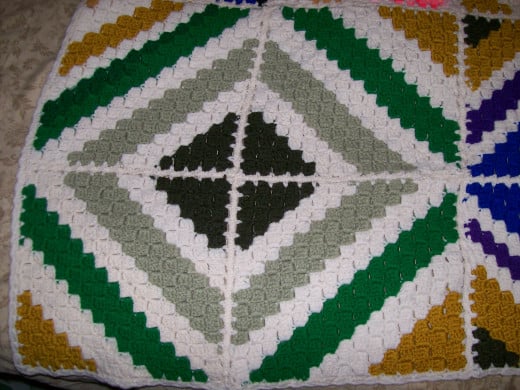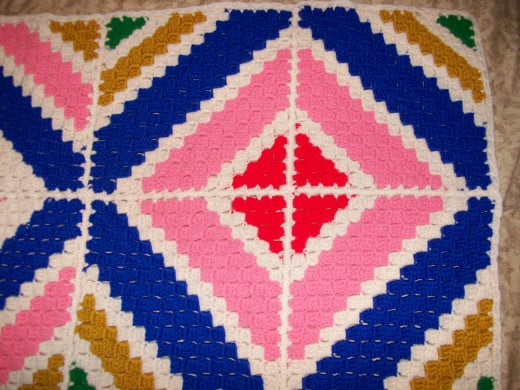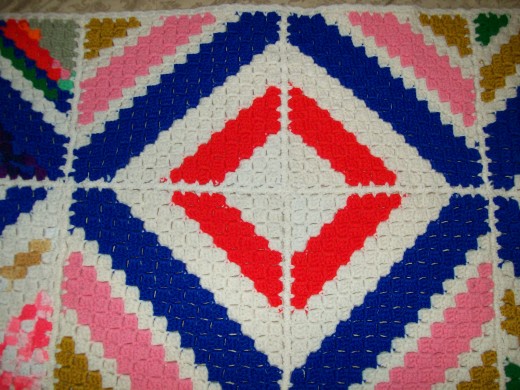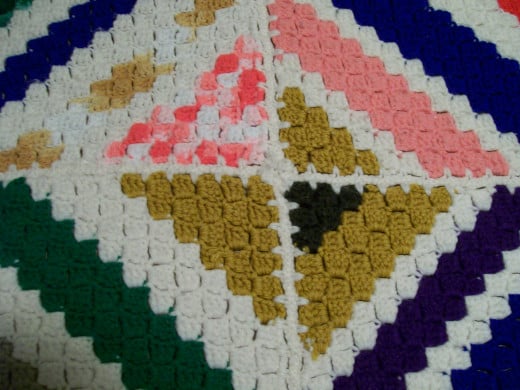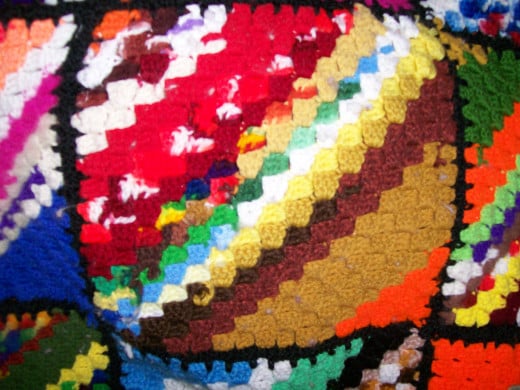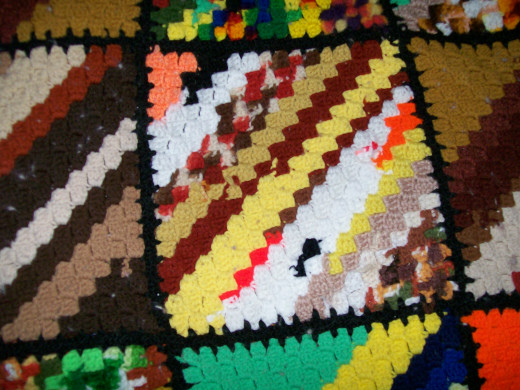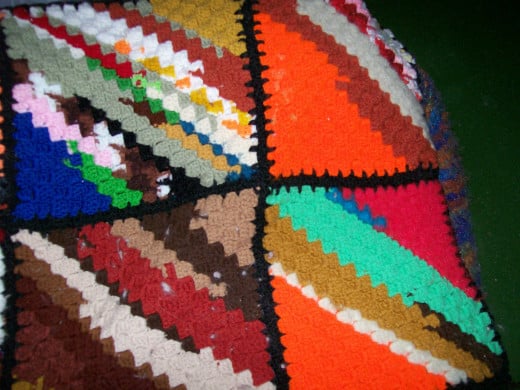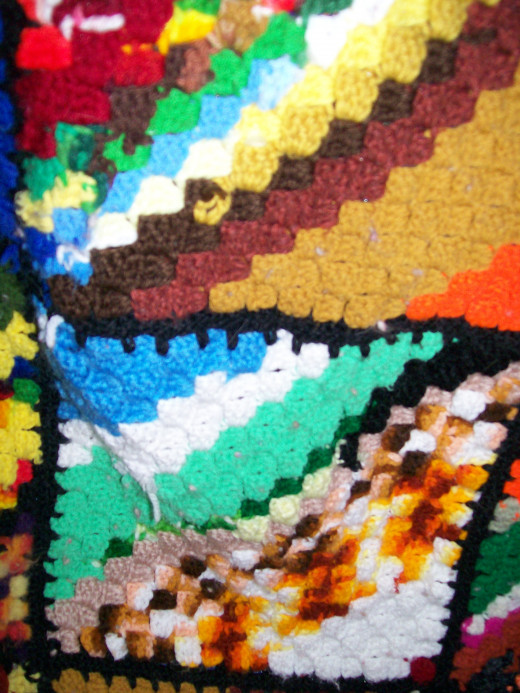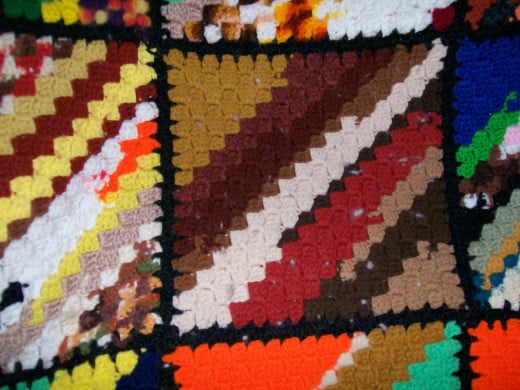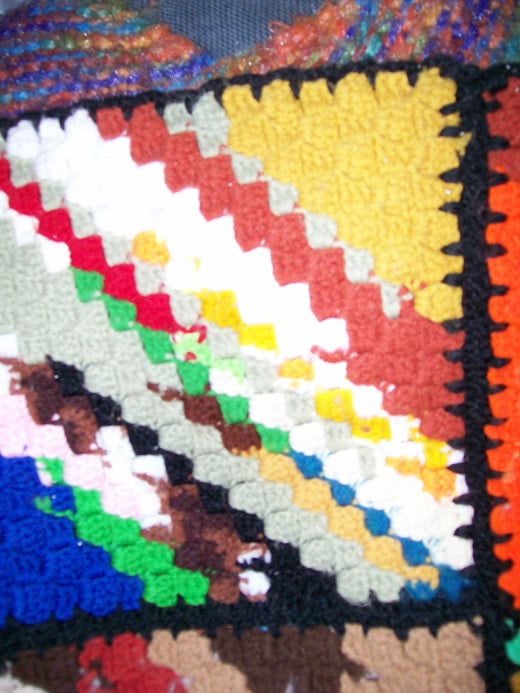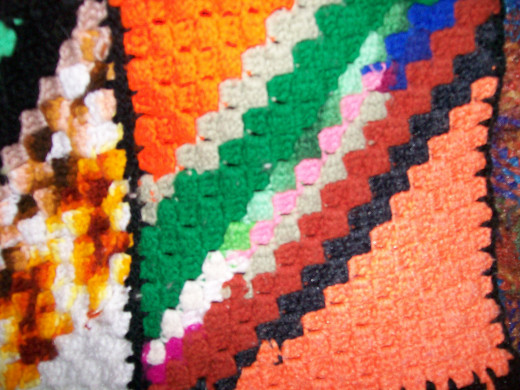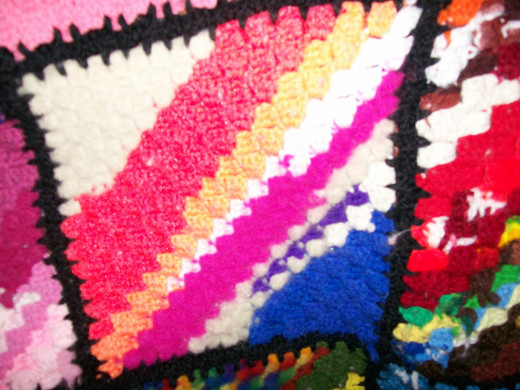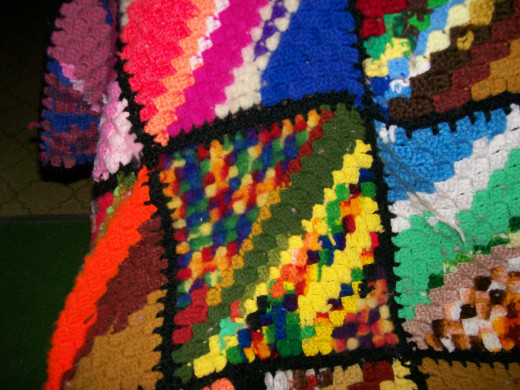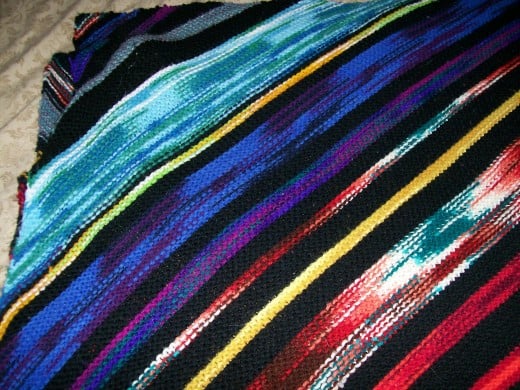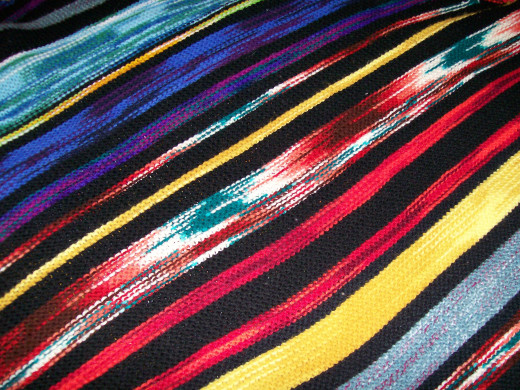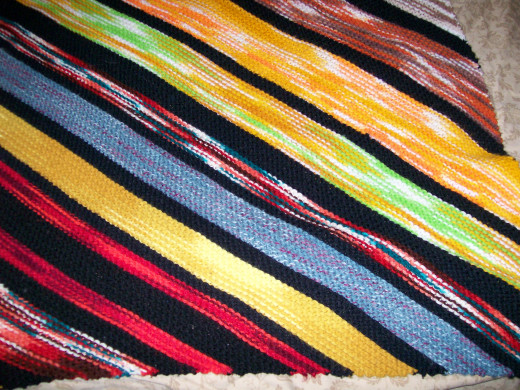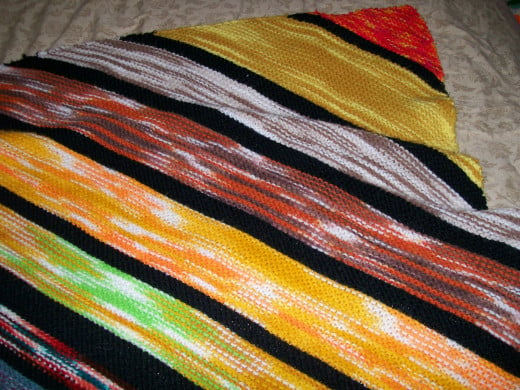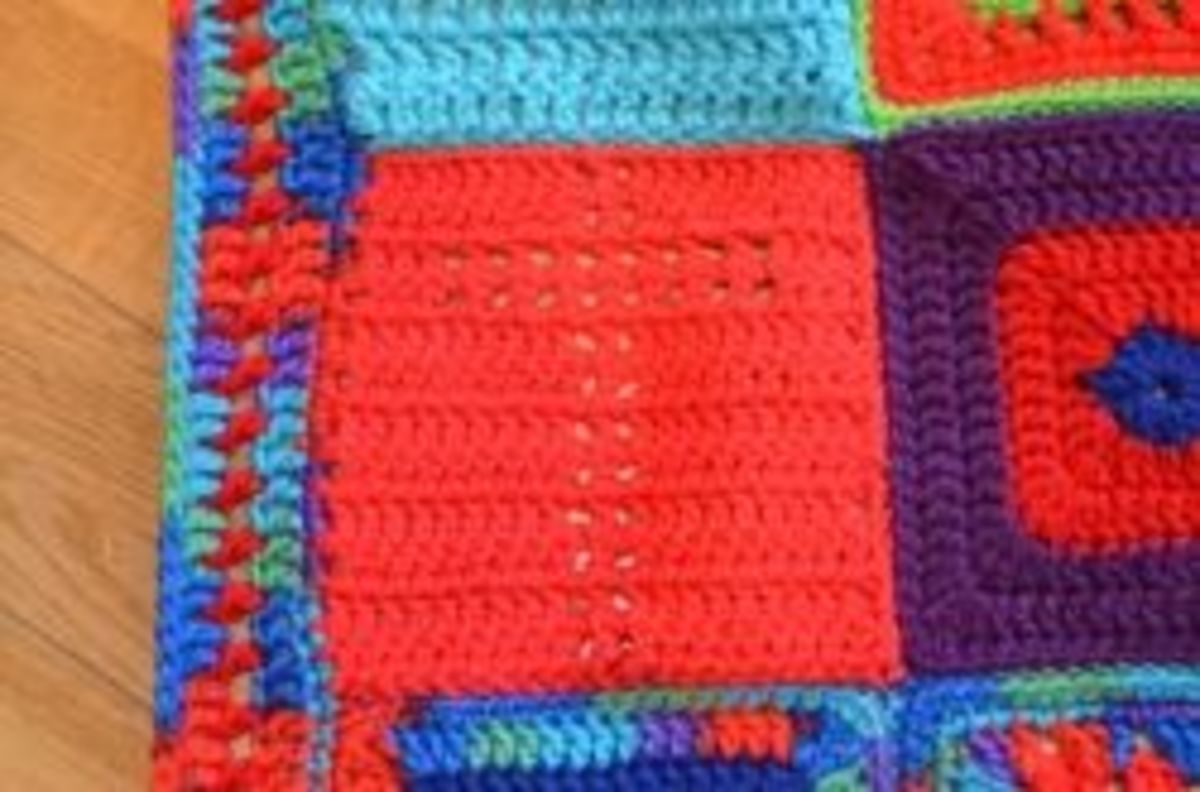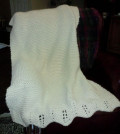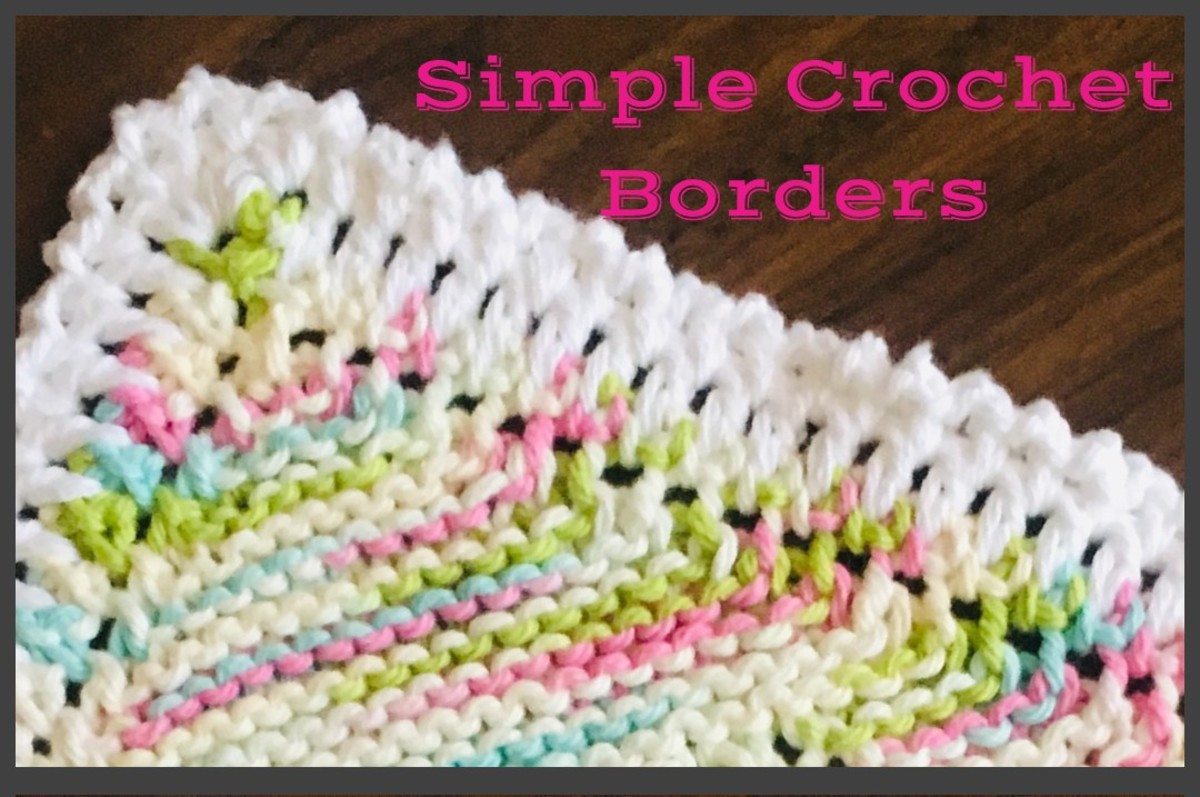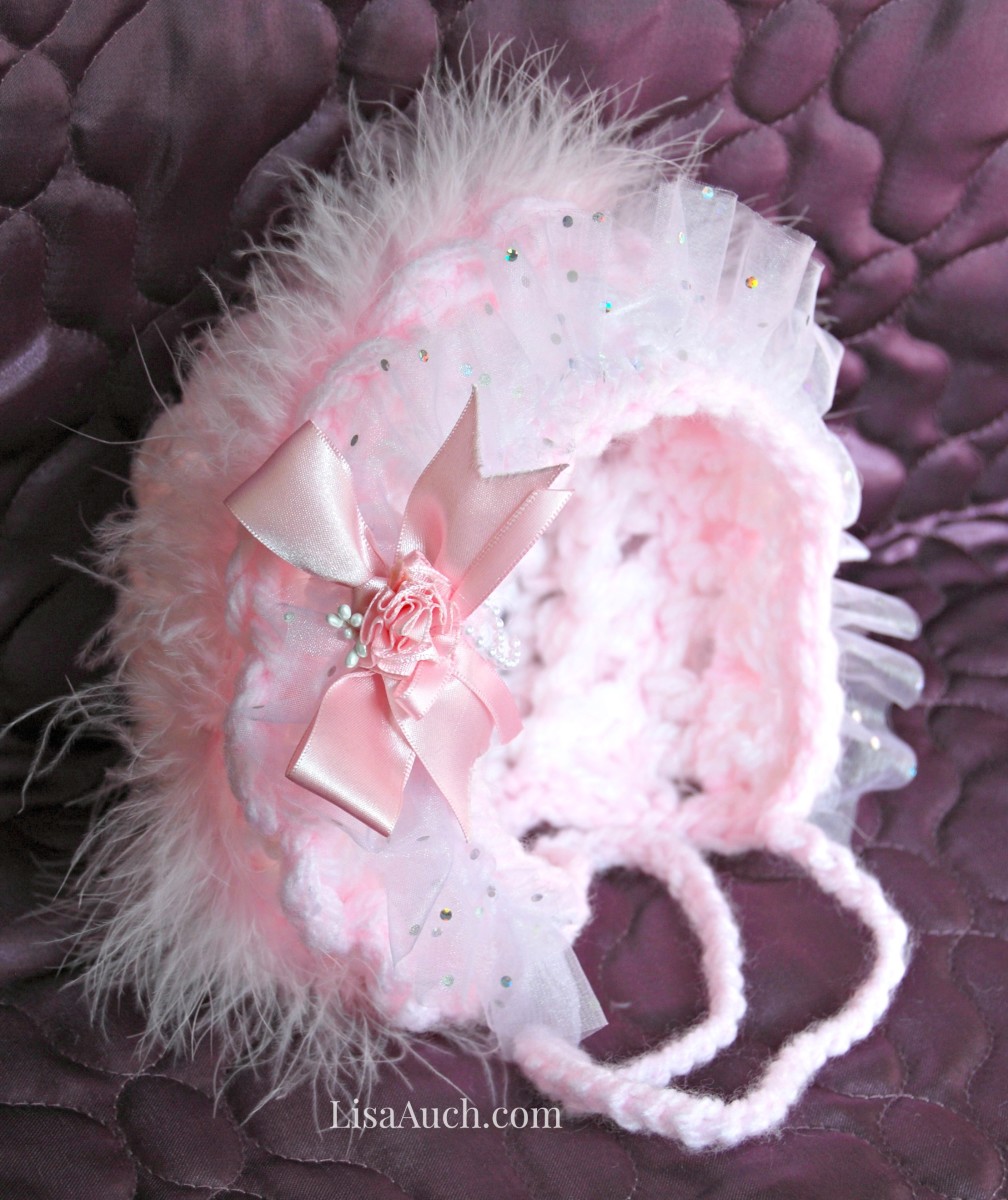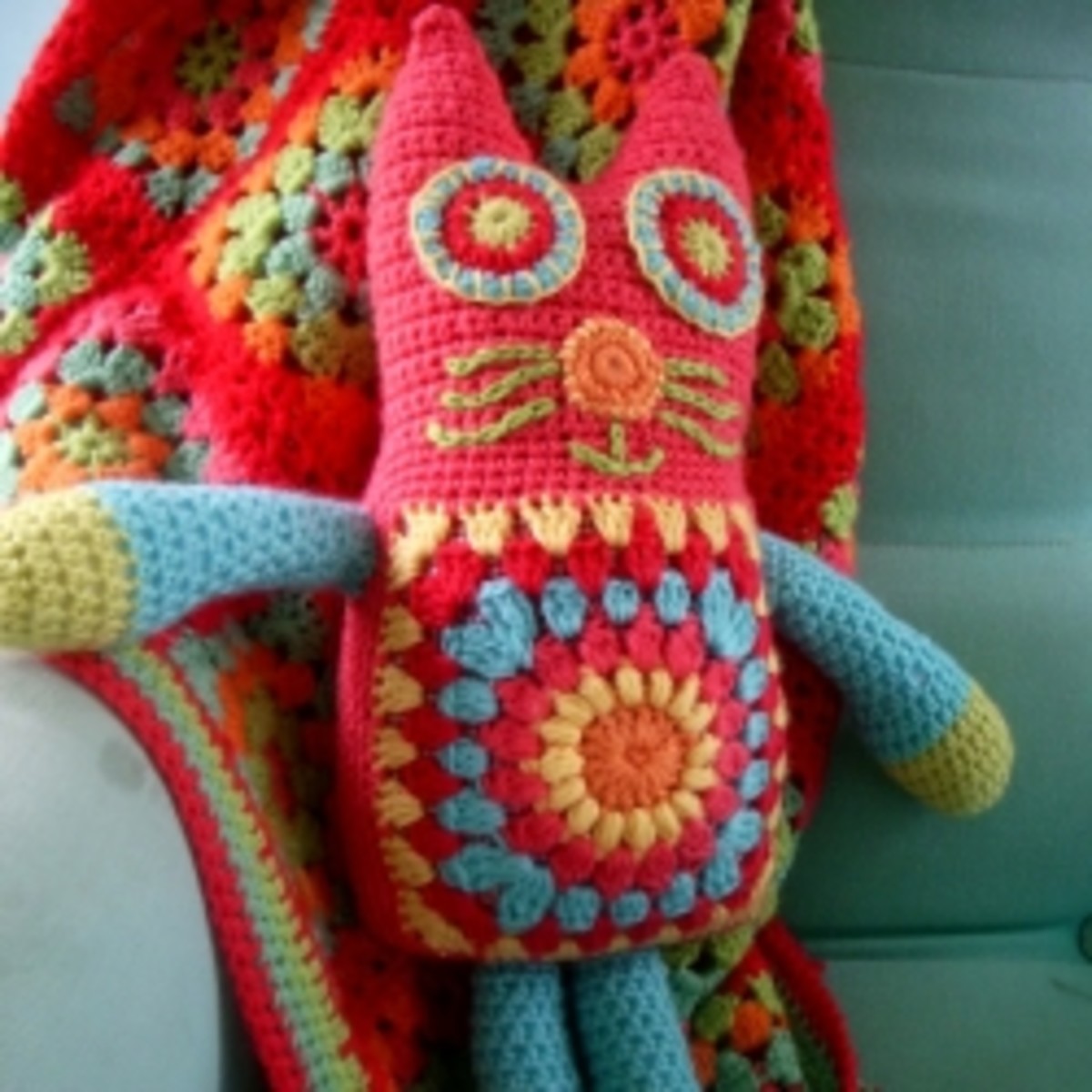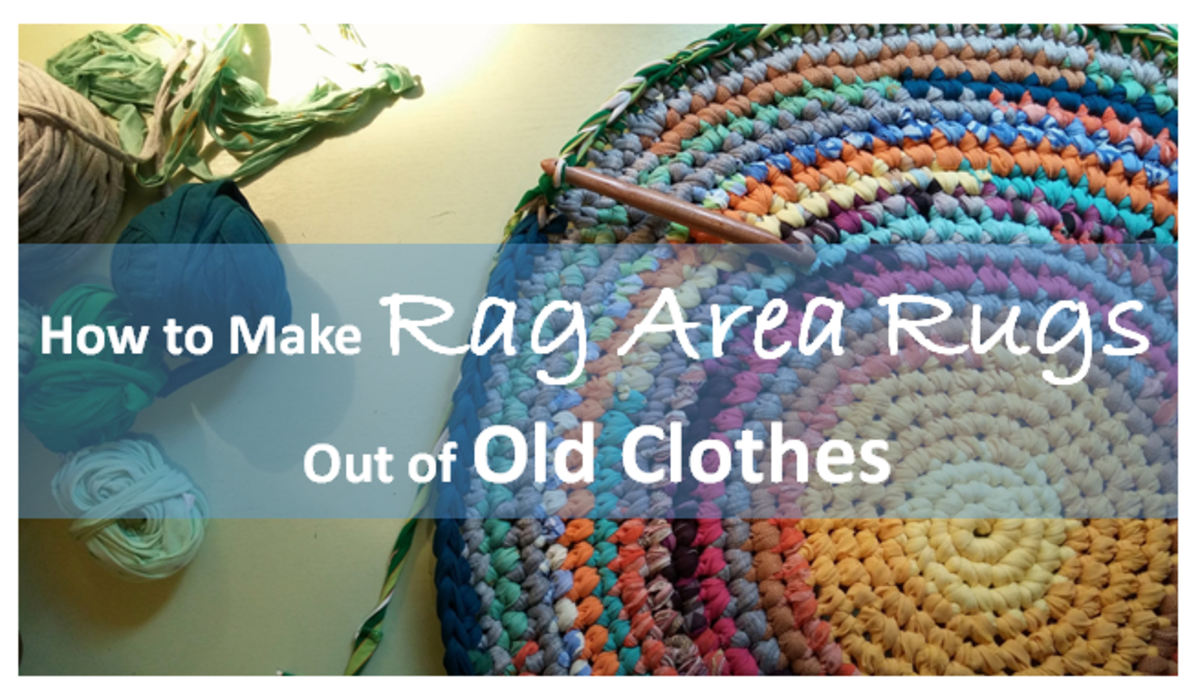- HubPages»
- Arts and Design»
- Crafts & Handiwork»
- Textiles
All That Yarn - Scrap Yarn Afghans
Colorful Scraps to make Squares
Click thumbnail to view full-size





Crochet Squares using Leftover Yarns
All That Yarn in my big stash was not always available to me. When I first started making afghans during my senior year of high school, I did not have a lot of yarn to work with at the time. My First Afghan was for my Grandmother. It was three different shades of green and cream made into many four-inch Granny Squares. The pattern called for fringe, but I’ve always felt that fringe was a big waste of yarn so I made a special border and put in puff or popcorn stitches for texture. It turned out very nice, or so I thought.
It turns out since I was such a newbie at making something big. I did not know to leave more than one to two inches of yarn for the tail as I was trying to get as much mileage out of the yarn I had purchased so that I did not run out.
Now I find that leaving three to four inches is still a little short, based on other knitters/crocheters standards who say leave six inches or so as “you will always have extra yarn to do so,” or should have purchased more than the pattern calls for, or “you have plenty to spare so don’t scrimp on the tails”. They must be taking into account that there is always leftover yarn. Now that I know better I am starting to do the longer tails when I add yarn or change colors in both my crochet and knitting projects.
Needless to say, the little one inch tails started to pull out and the Granny Squares started to come apart at the seams (anywhere they were sewn together) literally. I did not know this until years later when I asked my Grandmother why she wasn’t using the afghan I made for her.
The Second Afghan I made in my senior year was in the brick stitch pattern (now known as the C2C or Corner-to-Corner pattern). I used the odd skeins I had, some of the leftover greens from the afghan that I made for my Grandmother, and the off-white I purchased on sale. This afghan ended up with tiny lengths of yarn (not even a yard long) to finish some of the corners of the squares. I had to divide up the lengths so that I would have some for at least two of the four corners in order to repeat that color pattern. Thankfully, even after a lot of washing, these short tails (tied very tightly) have stayed secure in my Second Afghan.
New Scrap Afghan - Truly All Scraps
Click thumbnail to view full-size






Starting on a New Scrap Afghan - New Design
I took my Second Afghan to my first year of college. There I decided to make another similar afghan using mostly scraps, but the same brick stitch pattern for the squares. The first scrap I found was a few yards of green ombre (variegated) yarn that a fellow dorm neighbor had tossed in the communal trashcan (that had no lid). I started making the square with this yarn and then set it aside until I had more scraps to add to that first square.
When I taught beginning knitting and crochet at CasperCollege, I asked my students to contribute their leftover yardages of yarn to my All Scraps Afghan project. This way I also kept a memento of my students and their projects. This made the afghan time line over several years. When I felt that it was taking too long to get done, I decided to take other scraps from my stash which was now growing a little more with every project.
Since I had finished the Second Afghan in off-white yarn borders, I decided to try black yarn on the All Scraps Afghan. This way the black set off the bright colors and I did not have to match an off-white or white since there were many different ones already in the squares. I also did not angle the scrap squares like the squares in the Second Afghan. They are all running in the same direction.
Each square is either a variety of the same colors, like several shades of brown, or a mixture of several different colors. A lot of the time I had to finish a square with the yarn scraps I had on hand. This made for quite the colorful afghan. The density of the squares makes it a very warm one as well. If I had to do it over again I would use a bigger crochet hook and make them with a slightly looser tension.
Whoops! Wool Yarn has Felted!
Click thumbnail to view full-size

All Yarns are not created equal (fiber content).
I later found out when the All Scraps Afghan was washed that some of the yardages were partial or all wool yarn and not acrylic yarn. I could tell by the stitches becoming felted and then shrinking a bit. The off-white corner on the pictured square shows the felting of that yarn. Imagine my surprise as this was in the time before felting became popular, and I had no idea that this would happen.
Later on in a Home Ec college class on fibers I was taught how to tell if it was synthetic or natural with the burning test. (see my other blog on how to do this) I cut snippets of yarn from any scraps that I did not know the fiber content and checked them. I sorted out the wools and wool blends and donated them to the quilters at my church. The acrylics I kept and some became my Crochet Critters pencil toppers. (see my other blog with this pattern)
Knitting with Ombres
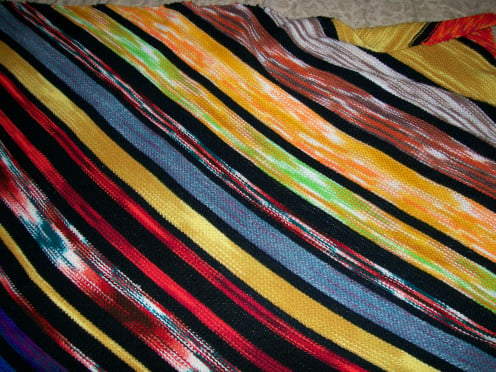
More views of Knitted with Ombres Afghan
Click thumbnail to view full-size



Knitting with Leftover Ombres
Still later, I tried out a version of a knitted scrap afghan. I had used a simple pattern that worked in stripes from corner to corner and made a diagonal design. I liked how easy it was and it worked up fairly fast. I used my leftover ombre (or variegated) yarns in stripes separated by black yarn. I had a lot of some yarns and not much of others. This determined where in the afghan they were used. The smaller balls were in the shorter stripes nearer the corners where it began and ended, while the larger balls were in the longer stripes toward the middle of the afghan. I would try to make sure I ended on an even row. The garter stitch in knitting has a wrong and right side when changing colors. Any small leftovers from the stripes went into other projects, like my Crochet Critter pencil toppers.
Just to wrap it up...
So you see that using up leftover yarns is a lot about using creativity. Sometimes a pattern will give you an idea, and sometimes you make it up as you go along. I could have made lots of scarves with many of the longer scraps and come up with some pretty interesting ones, but a person can only wear so many scarves.
An afghan is something that can be used as a quick cover up on a couch. I have noticed lots of TV shows that have an afghan thrown over the back of a couch…just check out the backgrounds of any TV show or commercial advertisement that has a couch in the scene.
An afghan can be layered on the bed with other blankets or afghans to ward off a chilly bedroom. They can also double as a bedspread, depending on the size of the afghan and the size of the bed. I know my cats have always liked to sleep on a folded afghan or stack of afghans, as something about the warmth and coziness appeals to them.
I hope you find that you can use leftover yarns for a project, and let your creativity take flight.
The Pattern for the Crochet Scrap Squares
Quick directions for Diagonal Brick Stitch (now known as Corner-to-Corner) pattern: Chain 6. Skip first 3 chains and double crochet in each of the next 3 (so you have 3 double crochet, 1 in each of the chains). Chain 6 and turn. Skip 3 chains, double crochet in the next 3 chains; slip stitch to the chain 3 loop of the first row, chain 3 and put 3 double crochet stitches in the chain-3 loop. [You should have 1 row with 3 double crochet, the next row with 2 sets of 3 double crochet.] Continue doing the chain 6 at the beginning of the row and putting 3 double crochet in the previous row’s loops. The piece will build up diagonally with one more on each row (row 1 =1, row 2 = 2, row 3 = 3, and so on).
To Decrease (or turn the corner): on the last row DO NOT put 3 double crochet in the last chain-3 loop (leave it unworked). Chain 1, Turn and slip stitch in the tops of each of the double crochet of the last brick and chain-3 loop, then chain 3 and put 3 double crochet in that loop. Do what you have done before across the row to the end.
For a Square, turn at the end of the row like in the decrease row.
For a Rectangle, continue building on one side and decreasing on the other until you get the length you want then decrease both sides (like for the square).
[The original pattern is from Patons Beehive 433 Afghans for You pattern book.]
Red Heart afghan patterns using Corner-to-Corner are available on Yarnspirations.com in several color combinations.
Cover of the Patons pattern book.
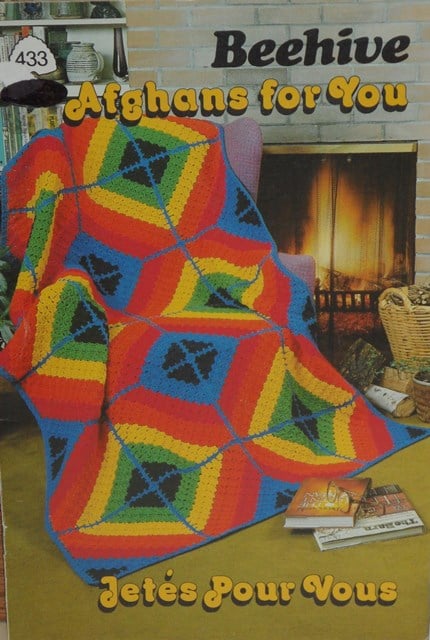
Knitted Scrap Afghan Directions (basic)
Cast on 3 stitches. Knit in the front and back of the first stitch (increases 1 stitch), knit in each stitch across. Turn. Repeat this until one side is the desired Width. To turn the corner on one side only: Knit in the front and back of the first stitch (increases 1 stitch), knit in each stitch across UP TO the last 2 stitches. Knit the last 2 stitches together (decreases 1 stitch). Turn.
Repeat this until desired Length. Then decrease at the beginning and ending of each row to bring the sides down. Bind off the last 2 or 3 stitches (depends on when you started decreasing). Weave in loose ends.
To make Stripes: do an even number of rows of the ombre or variegated color and then switch to black (or other solid color) and do an even number of rows of that one.
Leave about 4” of tail for each when starting or ending the yarn on a row.
If you tie together anywhere but the beginning or end of a row, make sure to leave about 4” of both tails and weave into the row.
[Any knitting pattern that works from corner to corner will work such as wash cloths, baby afghans, etc.]
